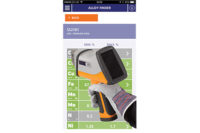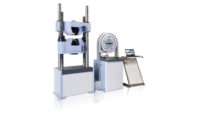It’s the year 2017. These days, it’s not uncommon for us to encounter several pieces of technology before we even leave the house in the morning. Simple devices like coffee makers and alarm clocks have had a space in our homes for decades, and with the entrance of the digital age, have made some impressive strides in technological advancement over the last several years. Alarm clocks have transformed into sleep-monitoring smartphone apps, and coffee makers now communicate with these alarm clocks to automatically brew a fresh pot of coffee just in time for when you wake up. As more and more users become accustomed to the convenience of smart technology and device connectivity in their personal lives, our expectation for digital convenience extends beyond our everyday personal devices and into our work lives, into places we haven’t ever considered.
It’s not surprising that many of the trends we see in our everyday devices have transferred over to the world of lab equipment, specifically, material testing systems. The most common trends in these systems over the last several years have had an extreme focus on one thing: the user. In a world where technical specifications of products are often neck-and-neck, or too ambiguous to differentiate, user experience, or UX, is the ideal opportunity to make a product or service differentiated enough to succeed. Some of the most common trends include touch technology, enhanced ergonomics, and internet connectivity.
1. Touch technology
Touchscreens have become so ubiquitous in our lives. Where we once used to only see them on ATMs and GPS devices, we now expect any handheld device to react to the swipe of a finger. It’s no surprise, as there are a number of benefits to touch technology.
Touchscreens offer a less intimidating user interface for operators when compared to panels of buttons and switches, creating an immediate sense of ease. Ease-of-use is an obvious beneficial feature to the user but also can benefit organizations at a higher level, minimizing the time needed to train new users, reducing the likelihood of needing to re-train users, and increasing the overall productivity of a lab.
The flexibility of a touch-friendly software platform also allows a large amount of creativity for software developers to incorporate not only visually appealing user interfaces (UI), but intuitive gestures and familiar icons that trend in today’s digital world. A full-touch environment provides software developers with a modular, scalable, and easily improvable space to continue to enhance the UI for a user. Because development of these interfaces is iterative, and typically don’t depend on hardware changes or physical controls, touch-screen environments offer an ideal update and upgrade path for labs that want to make the most out of new features quickly, and with minimal investment.
2. Improved Ergonomics
The physical comfort of the user is a critical component of a positive user experience with lab equipment. With increasing efforts to minimize operator strain, decrease the number of workplace injuries, and increase overall employee health, organizations are making great strides to improve workplace ergonomics where possible. Minimizing repetitive and exhaustive motions can lead to fewer workplace injuries and increased general happiness when performing what can be considered mundane lab tasks.
Ergonomic workspaces are typically more compact, cockpit-style setups with closely-mounted operator panels and easy-to-handle tools such as handsets and buttons. It is also possible to optimize software ergonomics that take advantage of sequential, natural body movements to minimize repetitive operator strain for tasks such as running multiple tests. Having the flexibility to easily adjust a workspace per user also makes things more convenient for labs with many operators. In many situations, having a more ergonomic setup can also contribute to higher throughput and efficiency in a lab environment.
3. Internet Connectivity
It’s almost unheard of in many regions of the world to live without an internet connection. The internet has been incorporated into so many devices in recent years that there is even an industry phrase called the Internet of Things (IoT), which refers to those connected devices—sometimes labeled as “smart”—working together to exchange information and optimize not only the user experience, but also productivity and accuracy. The benefits of many of these devices are continually improving. Consider a smart refrigerator—you can look up recipes based on its contents, use its data to build shopping lists which are viewable on a mobile device, and even get technical support remotely via its interface. Similarly, internet connectivity in modern materials testing instrumentation can open up a number of improvement opportunities for labs and their users.
Most notably, data and results created by a materials testing system can be easily or even automatically shared amongst stakeholders with access to a network or cloud connection, minimizing the need to manually transfer, consolidate and sort data—which can introduce manual data entry errors, and can take an excessive amount of time. As many labs move towards a digitally connected network across sites and offices, the ability to move data around easily and securely is critical now more than ever.
Instrument connectivity not only gives users an opportunity to share their results with ease, but also their technical issues. Remote support tools have become more and more commonplace in critical places like our cars and in our most frequently-used applications. Remote support tools are optimal for lab environments, especially ones with a variety of equipment, because they allow quick and easy communication with lab equipment suppliers, allowing technical support representatives to understand and resolve issues faster so users can get back on their feet in less total time. This can include integrated screen sharing capability, remote diagnostic tools, and interfaces that allow users to schedule routine maintenance, minimizing the need for lab managers to make several tedious set-up calls.
The electronics industry has paved the way to advancing how we expect to interact with our devices and appliances. It was only a matter of time before this technology and focus on enhanced user experience would make its way to the test lab space. With a focus on touch technology, enhanced ergonomics, and internet connectivity, materials testing equipment is reaching the modern age. As we continue to learn and grow in the digital world, the future looks bright for organizations that begin to take advantage of enhanced user experience and modern technology.





